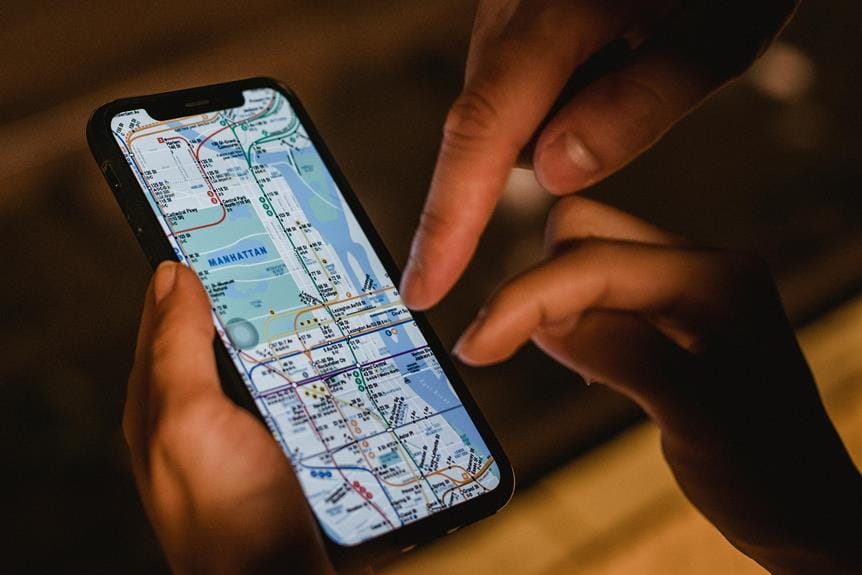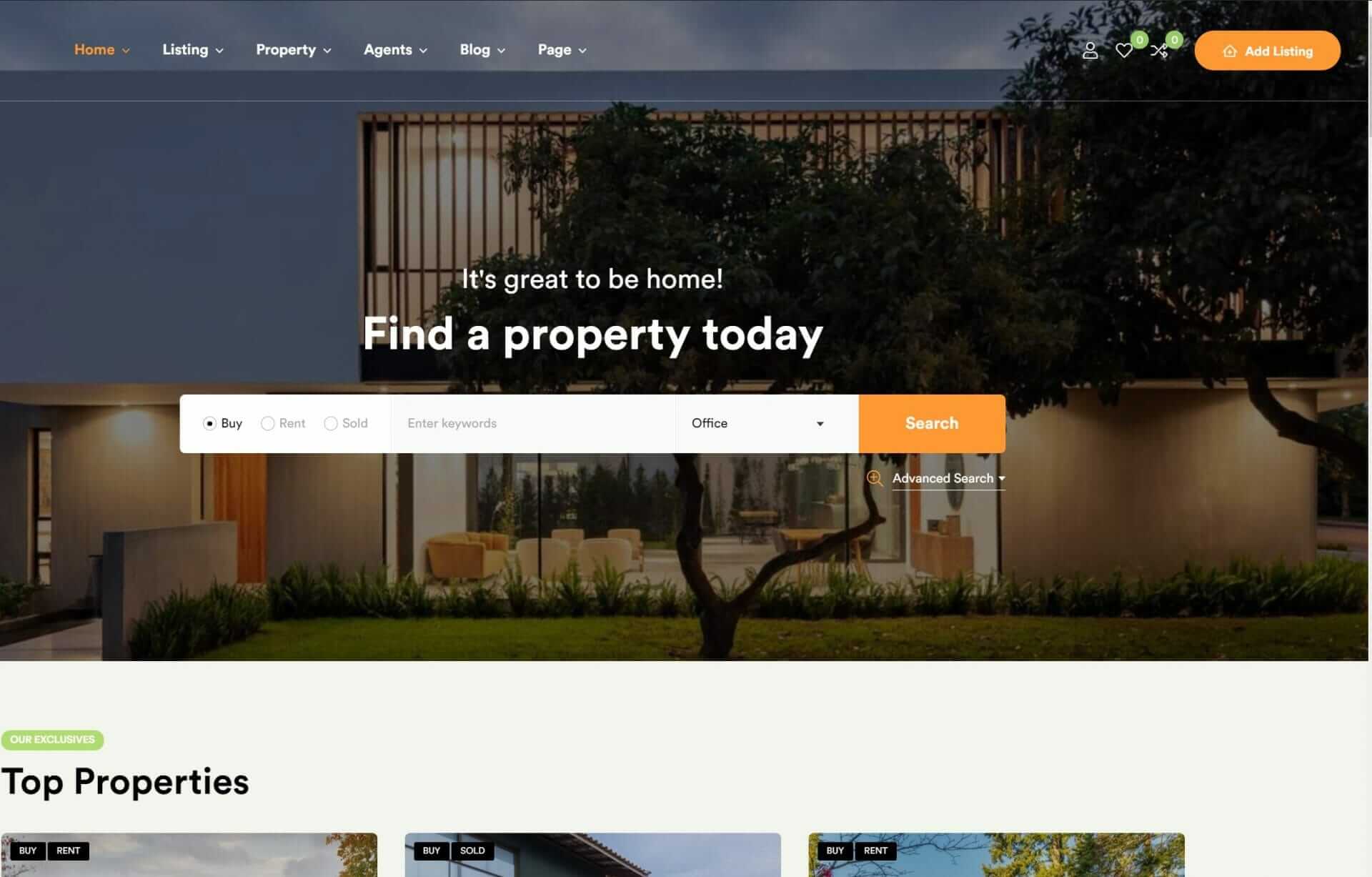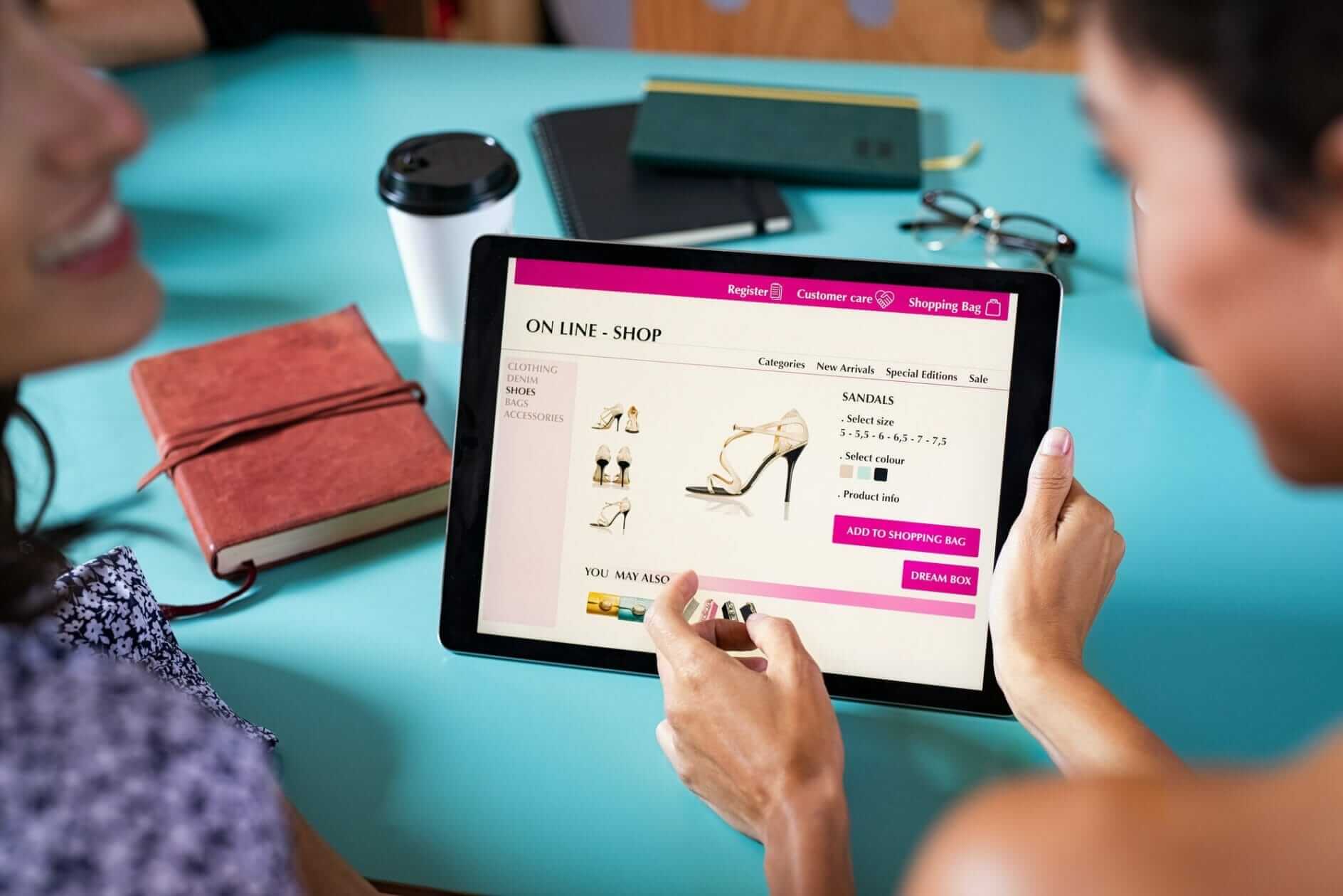As you build your mobile app, make sure to prioritize accessibility, not just for the 1 in 4 US adults living with a disability, but also to improve user experience, boost app store ratings, and meet accessibility regulations. To do this, incorporate Web Content Accessibility Guidelines (WCAG) principles, focusing on perceivable, operable, understandable, and robust design. Consider key accessible design elements like touch targets, color contrast, screen readability, and simplified gestures. Implement features like autofill, clear form labels, dynamic type, and dark mode. With this foundation, you’ll set yourself up for success – and be ready to delve into the nitty-gritty details.
Understanding Web Accessibility Standards
As you develop your mobile app, understanding web accessibility standards like the Web Content Accessibility Guidelines (WCAG) is crucial for creating an inclusive user experience that caters to all users, regardless of their abilities.
You want your app to be accessible to everyone, including those with disabilities, and that’s where WCAG comes in. These guidelines cover all aspects of digital content, from perceivable to operable, understandable, and robust design principles.
By following WCAG, you guarantee that your mobile app is accessible to all users. This means considering factors like touch targets, color contrast, and screen readability in your design.
As you craft your app’s content, remember that users with disabilities might interact with your app differently. They might use assistive technologies or require more time to navigate your app’s features.
Compliance with WCAG not only makes your app more inclusive but also helps prevent potential legal issues. By understanding and implementing web accessibility standards, you’re creating a better experience for all users, regardless of their abilities.
Key Principles for Accessible Design
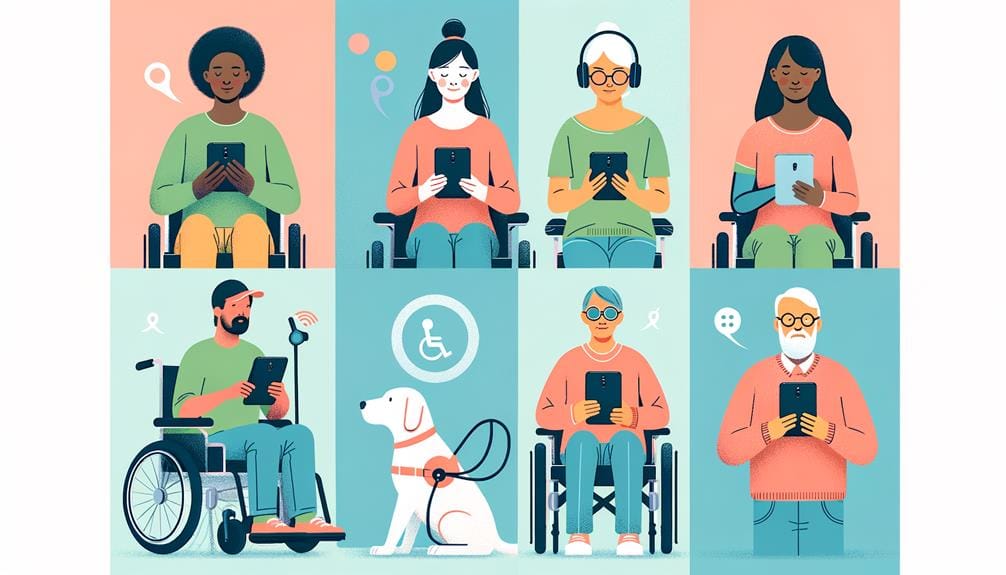
By incorporating key principles of accessible design into your mobile app, you’ll create an inclusive experience that caters to users of all abilities. To achieve this, you’ll want to follow the Web Content Accessibility Guidelines (WCAG) principles, focusing on perceivable, operable, understandable, and robust design. One critical aspect is to make sure touch targets are at least 9mm x 9mm, allowing users with different abilities to easily interact with your app.
Consistent layouts and templates also play a significant role in mobile app accessibility. By using a uniform design, you’ll help users navigate your app more easily. Simplifying gestures and providing feedback will further enhance the user experience.
Additionally, make data entry a breeze by incorporating features like autofill and clear form labels. This won’t only improve accessibility for users with disabilities but also benefit all users by making the app more intuitive and user-friendly.
Accessibility Guidelines for Mobile Apps

As you create your mobile app, you’ll want to guarantee it’s accessible to all users, and that’s where guidelines come in. You’ll need to design your app to meet key standards, such as the Web Content Accessibility Guidelines (WCAG), which provide a roadmap for crafting accessible mobile experiences.
Designing Accessible Mobile Apps
Designing accessible mobile apps requires that you follow specific guidelines to guarantee users with varying abilities can easily navigate and use your app. To start, you’ll want to familiarize yourself with the Web Content Accessibility Guidelines (WCAG), which provide a framework for creating accessible mobile apps.
Consider screen size limitations and color contrast considerations to ensure your app is usable by everyone. Utilize features like dynamic type and dark mode to optimize accessibility for users with varying abilities.
In addition to these features, include alternative media formats with captions to guarantee content accessibility for all users. Simplify gestures and touch interactions for easy navigation and use on mobile devices.
This won’t only enhance the user experience but also provide clear labels in navigation bars and optimize data input for all users, including those with mobility impairments.
Mobile App Accessibility Standards
Mobile app accessibility standards play an essential role in promoting equal access to digital communication on mobile platforms, and it’s crucial that you familiarize yourself with them to create inclusive and user-friendly apps. To start, you need to understand the guidelines set forth by the Web Content Accessibility Guidelines (WCAG), which offer specific criteria for touch target size and spacing in mobile app accessibility standards.
These guidelines are vital for promoting that your mobile app is accessible to users with disabilities.
The Americans with Disabilities Act (ADA) mandates compliance with WCAG for mobile app accessibility, making it a legal requirement for your app to meet these standards. Federal courts and regulations also emphasize the importance of accessibility in mobile apps.
To promote that your app meets these standards, you should conduct accessibility testing using tools such as screen readers and responsive design. By incorporating inclusive design principles, you can create an app that’s usable by everyone, regardless of their abilities.
Accessibility Testing Techniques
To ensure your mobile app meets accessibility standards, you’ll need to employ various testing techniques that evaluate its usability for users with different abilities. Accessibility testing techniques, such as screen reader testing, color contrast checks, and usability testing, can help comprehensively comply with legal requirements like the ADA and WCAG guidelines.
You’ll want to test for screen reader usability to make sure users with visual impairments can effectively access and navigate your app. By doing so, you’re making your mobile app accessible to a wide range of users.
Also, checking for sufficient color contrast can help ensure text and other elements are easy to read for everyone.
Finally, usability testing, which looks at the complete user experience, can provide key insights that can guide refinement and drive innovation. Such inclusive app testing allows users with differing abilities to get the same level of accessible user experiences from your application.
Hence, making and keeping such user-friendly adaptations is more than the only right design decision, such as doing the correct work to include the diverse end-users requiring these changes the most good.
Implementing Accessible Mobile App Features
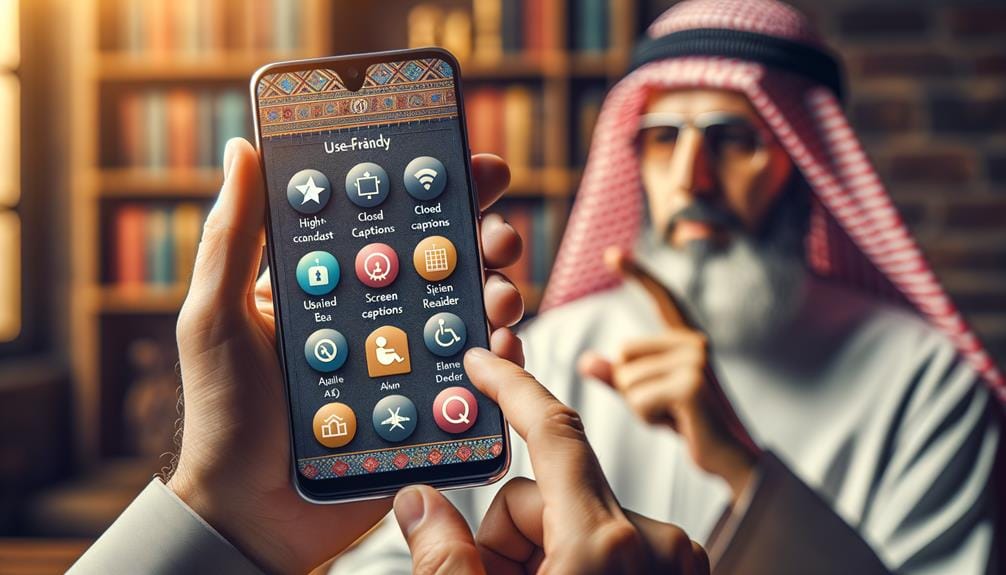
As you design your mobile app, you’re likely thinking about how to make it user-friendly for everyone. To guarantee accessibility, you’ll want to focus on key features like accessible app navigation, inclusive gesture design, and accessible data entry.
These elements can make all the difference for users with varying abilities. By implementing these features, you can create an app that’s not only usable but also enjoyable for a wide range of users.
Accessible App Navigation
By incorporating accessible features into your app’s navigation, you enable users with disabilities to effortlessly find the information they need. Designing and developing accessible mobile apps is essential for providing an inclusive experience for all users. To achieve this, focus on clear navigation labels, high contrast mode, and one-handed usability. Make sure that important information is visible without excessive scrolling, catering to various screen sizes.
| Accessible Navigation Features | Benefits for Users |
|---|---|
| High Contrast Mode | Improves readability for visually impaired users |
| Clear Navigation Labels | Simplifies navigation for users with cognitive impairments |
| One-Handed Usability | Facilitates use for individuals with mobility impairments |
| Simplified Form Fields | Streamlines data input for users with dexterity impairments |
Inclusive Gesture Design
Designing inclusive gestures in your mobile app allows users with varying abilities to interact easily, making swiping, tapping, and clicking intuitive for everyone. By incorporating inclusive design principles, you’re not only enhancing accessibility but also creating a better user experience for all.
For users with impaired vision, design UI elements with large icons and text to improve visibility and usability. You’ll also want to implement gestures that align with platform functions, securing a seamless and intuitive experience.
When it comes to navigation, provide easy-to-tap buttons and clear labels in navigation bars, enhancing navigation for all users, including those with mobility impairments. Simplify gestures and incorporate feedback mechanisms to create a user-friendly experience for individuals of varying abilities. By doing so, you’ll be providing an app that’s accessible and enjoyable for everyone.
Accessible Data Entry
When implementing accessible mobile app features, ensuring that data entry is intuitive and user-friendly is crucial for creating an inclusive experience for all users.
You want to make sure your mobile apps’ forms are designed to simplify data entry, reducing manual input errors that can be frustrating for everyone, especially users with disabilities. Implementing autofill features is a great place to start, as they can automatically fill out forms, saving users time and effort.
As you design your forms, prioritize clear labels for each field, making it crystal clear what information is required. This clarity helps users with disabilities understand what they need to do, ensuring they don’t get stuck in the data entry process.
Intuitive feedback mechanisms are also essential, guiding users through each step and indicating when they’ve successfully completed a field. Additionally, limit the number of input fields to streamline data entry.
Testing and Evaluating Mobile Accessibility

Your mobile app’s accessibility relies heavily on thorough testing and evaluation to guarantee that all users can navigate and interact with it seamlessly. To make sure your app is accessible, you’ll need to conduct in-depth accessibility testing, including screen reader compatibility, color contrast checks, and usability testing.
Don’t solely depend on automated tools – carry out usability tests with real users to pinpoint accessibility issues and enhance the overall user experience.
Industry benchmark reports can offer valuable insights into your app’s accessibility compared to competitors. It’s crucial to integrate accessibility testing into your development cycle early and regularly to address barriers effectively.
Ensure your app supports screen readers and provides options for larger text to greatly improve accessibility.
Best Practices for Ongoing Accessibility
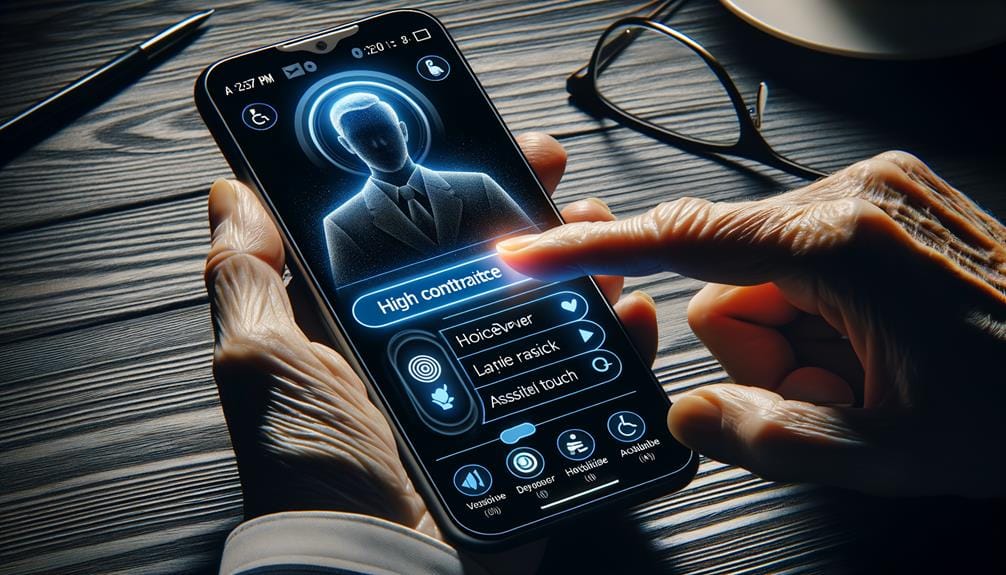
Maintaining accessibility in a mobile app requires ongoing effort and commitment, starting with regular accessibility audits and testing to guarantee adherence with evolving standards.
You’ll also want to implement user feedback mechanisms to continuously enhance the accessibility of your mobile app. This will help you stay on top of evolving accessibility guidelines and best practices, securing an improved user experience.
Here are some key considerations to keep in mind:
- Conduct regular accessibility audits and testing to ensure continuous compliance.
- Implement user feedback mechanisms to continuously enhance accessibility.
- Stay updated on evolving accessibility guidelines and best practices.
- Provide training and resources to your development team on accessibility considerations.
To Recap
As you wrap up your mobile app accessibility journey, imagine a user with a visual impairment effortlessly browsing your app’s intuitive interface. Coincidentally, the screen reader announces each element just as you intended.
You’ve successfully bridged the accessibility gap, fostering an inclusive experience for all. By embracing key principles, guidelines, and testing strategies, you’ve not only complied with standards but also enhanced the overall user experience.
Your dedication to accessibility has opened doors to a broader, more diverse audience.

